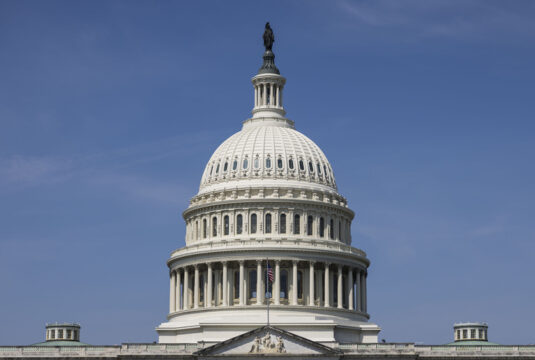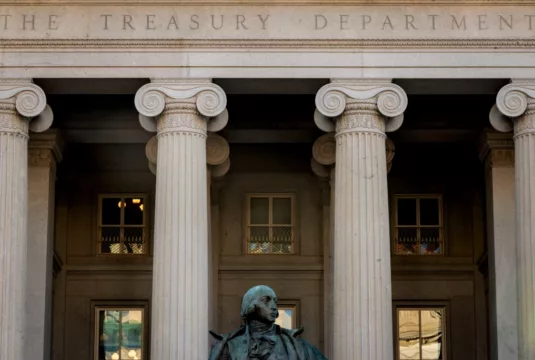Considerations for the Upcoming U.S. Beneficial Ownership Registry
January 1st marked not only the first day of a new year that promises progress against the pandemic, but the passage of landmark legislation that will help curb the corruption that undermines public health and pandemic recovery efforts and facilitates corrupt and criminal activity. The Corporate Transparency Act requires U.S. businesses to disclose who actually owns or controls them—known as “beneficial ownership” information—and effectively bans the abuse of anonymous companies.
Now, the Financial Crimes Enforcement Network (FinCEN), housed within the Department of Treasury, is tasked with the creation and maintenance of a database to collect this information on who owns and controls companies created in the United States. Previously, anonymous companies were used by corrupt officials and others to steal from public treasuries and evade accountability. As part of the rulemaking process, FinCEN solicited a request for feedback from the public, and the TI-US office submitted an extensive set of recommendations regarding the upcoming registry.
There are four key areas that will determine the ultimate effectiveness of the new law: the definition of “beneficial owner,” the scope of exemptions for certain entities, the ability to have timely access to the registry, and the extent to which the registry’s data is subject to verification.
Definition of “Beneficial Owner”
As we previously noted in one of our factsheets, the CTA’s definition of beneficial ownership is among the most critical aspects of the new law. In layman’s terms, a beneficial owner is the individual(s) who ultimately own or benefit from a company—not simply the lawyers or agents who may have incorporated or registered the entity.
The CTA itself defines a “beneficial owner” of a company as an individual who either “exercises substantial control over the entity” or “owns or controls not less than 25 percent of the ownership interests of the entity.” The “substantial control” provision is particularly important as it recognizes alternative arrangements and how ownership stakes can be manipulated. For example, imagine a company created and controlled by a corrupt official with a brother, spouse, and two children. If each has an equal “ownership” stake of 20 percent, then no one would have to be reported as owning the company. The CTA doesn’t allow such a simple evasion. That is why it also requires naming those who exercise substantial company control.
In order to ensure that the “substantial control” provision is as strong as possible, though, FinCEN’s rules must specify the indicators of control. At a minimum, the implementing rules should state that the term “control” means the power to vote, direct votes, appoint and replace board members, decide on the sale or termination of the company, and direct who takes possession of company funds or assets. Clarifying the indicia of company control is a necessary and important step toward the effective enforcement of the CTA’s strong definition of “beneficial owner.”
Access to the Database
Law enforcement, federal agencies, and financial institutions must be able to access data from the registry in a timely manner, as we discussed in detail in a recent factsheet. FinCEN would in fact undermine its own anti-money laundering efforts if it created a robust database of ownership information and then denied or delayed timely access to that information. Timely access is also required by the international standards put forth by the Financial Action Task Force (FATF) of which the U.S. is a founding member.
According to the CTA, state, local, and tribal law enforcement can request and receive beneficial ownership information so long as that request is authorized by an officer of a court of competent jurisdiction. Quite distinct from a court order from a judge or a subpoena from a prosecutor, authorization from a court officer was chosen by the drafters of the CTA to allow for a wide range of access options that required minimum involvement from the relevant court or tribal equivalent. Critically, the CTA does not limit an “officer of such a court” to a judicial officer, meaning it must be interpreted more broadly than just a judge.
Financial institutions, including banks, security firms, insurance companies, and money service businesses must be granted real-time access to the database to fulfill responsibilities to know who their customers are and whether they should be doing business with them. Employees who meet the delineated protocols and certify that they have read and understand the penalties for misuse of the database should have full access to the ownership information they need to effectively carry out their legally mandated “know your customer” obligations. While these employees should not solely rely on the information provided by the database, the data pulled can be a reliable assurance check.
FinCEN should also ensure the person who filed the ownership information enters their own contact information. For law enforcement, this person may be the only contact, link, or data point to situations involving illicit or criminal activity. Similarly, banks need as much information as appropriately available to effectively check to whom they are granting access to our financial system.
Scope of Exemptions
When the United Kingdom originally set up its beneficial ownership directory in 2016, it exempted certain types of partnerships, only to see the use of those vehicles skyrocket after the database went into effect. Lawmakers later chose to revoke that exemption. To avoid similar mistakes, FinCEN must narrowly construe the CTA’s list of exempted entities so as to not create any new loopholes for corrupt or other criminal actors. Some entities that are exempt from CTA’s reporting requirements include:
- Entities that are wholly owned by certain other exempt entities;
- Dormant companies that have no foreign owners;
- Charitable and split-interest trusts;
- Large companies with over 20 employees
In our comments to FinCEN, we urge the agency to avoid engaging in a political rulemaking that would result in granting unjustified exemptions to favored or powerful constituencies, leading to future exploitation. Instead, the rule should take a risk-based approach, and narrowly tailor the exemptions granted to categories of entities.
Verification of Data
Fulfilling the reporting requirements of the CTA is not expected to be a time-intensive burden for U.S. businesses, especially considering that approximately 99% of all U.S. companies are considered “small” by the U.S. Small Business Administration, with relatively straightforward ownership structures. Despite this, FinCEN can take certain steps to streamline the reporting process, including real-time verification of filers’ information. By partnering with the State Department, FinCEN can electronically and instantly check names and passport numbers. Nlets, a data exchange platform housing a directory of state drivers’ licenses and identification numbers, would also be a valuable partner.
Verifying information in real time would not only improve the quality of data but would also reduce inadvertent errors that would need to be corrected before small businesses bank could open a bank account or obtain a loan.
These key provisions, together, go a long way toward maximizing the impact of the CTA. They would help FinCEN ease compliance for businesses and ensure the information is highly useful to law enforcement.
Our full set of recommendations to FinCEN can be found here.





